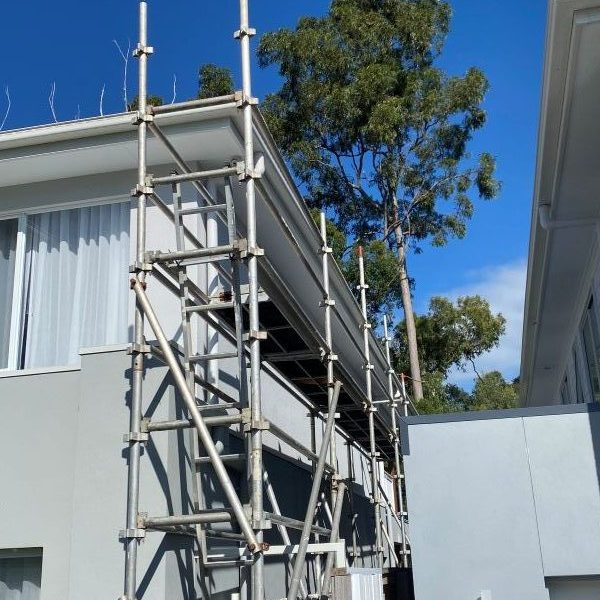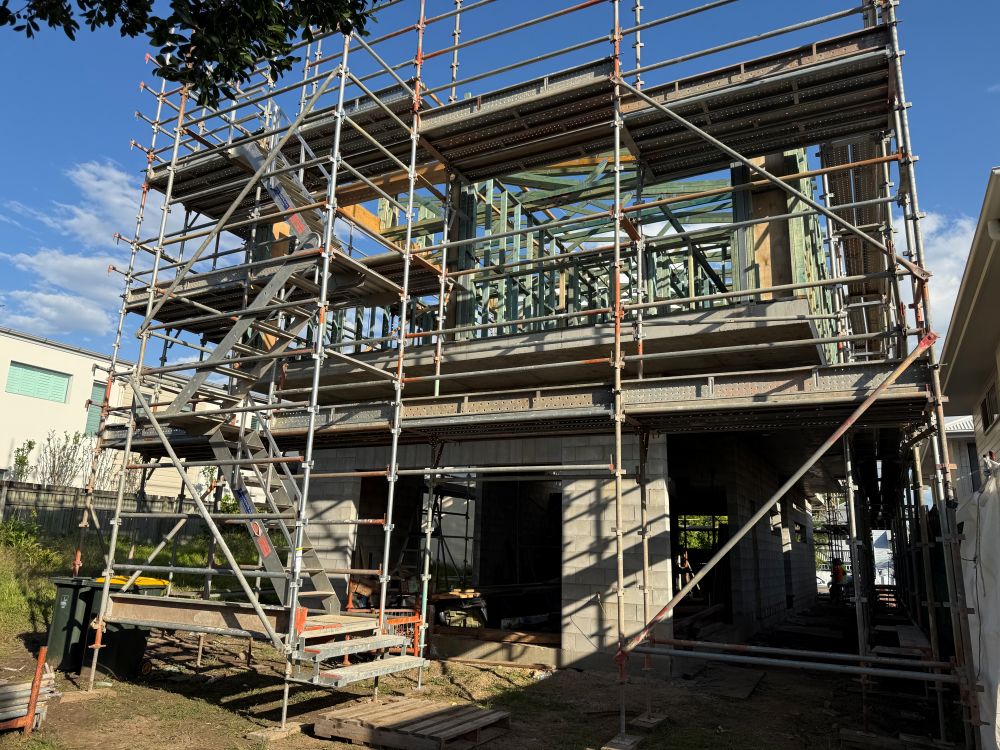Maximising Scaffold Load Capacity for Optimal Safety and Compliance in the Construction Sector
Scaffold load capacity represents a pivotal concept that defines the utmost weight a scaffold can safely support during various construction tasks. Understanding this essential principle involves recognising three primary categories of loads that require careful consideration:
- The weight of the scaffold itself, commonly referred to as the dead load, which consists of the scaffold's structural elements.
- The weight of personnel, tools, and materials placed on the scaffold, collectively known as the live load, which is crucial for effective operational planning.
- External forces such as wind, rain, or vibrations impacting the scaffold, classified as environmental load, which are essential for assessing the overall structural stability.
Acquiring a thorough understanding of these loads is indispensable, as they directly influence the total stress endured by a scaffold during its operational lifespan. Adhering to these calculations is not merely a recommendation; it is a legal requirement under Australian law to protect the welfare of all individuals engaged in construction activities.

Your Ultimate Guide to Effectively Using Our Scaffold Load and Height Calculator
While there is no universal formula applicable to every scaffold configuration, our scaffold calculator offers a user-friendly and efficient method to obtain accurate estimates by streamlining essential variables. This tool is tailored specifically for residential builders, homeowners, and scaffold hire professionals who operate under the strict guidelines set forth by Australian OHS standards.
Step 1: Identify the Type of Work
Start by assessing the nature of the work to be undertaken, which may encompass tasks such as roof restoration, exterior painting, solar panel installation, cladding, or rendering, each necessitating specific scaffold configurations to ensure safety and compliance.
Step 2: Specify the Number of Workers
For instance, you may need to enter the number of workers—let’s say two individuals—who will be operating simultaneously on the scaffold platform, thereby ensuring the load capacity is accurately calculated.
Step 3: Estimate the Weight of Materials
This could involve entering approximately 120 kg worth of rendering materials or tools that will be employed during the project, which contributes significantly to the overall live load and safety calculations.
Step 4: Enter the Height of the Platform
For example, the height may be set at 4.5 metres above ground level, a crucial factor for ensuring compliance with safety regulations and standards.
Upon inputting this information, the calculator will generate a recommended scaffold configuration that includes:
- The appropriate duty class (e.g., Light, Medium, or Heavy) tailored to meet the load requirements.
- An estimation of the Safe Working Load (SWL) per bay, which is critical for maintaining operational safety and compliance.
- The recommended scaffold type (e.g., aluminium tower or steel frame) that is most suitable for the specific application.
- Necessary safety features, such as guardrails, soleplates, and stabilisers, which are essential for enhancing safety and compliance.
- Compliance triggers related to height, such as tie-offs that are required when working above 4 metres, ensuring structural integrity and safety.
Exploring the Lack of a Universal Load Formula for Scaffolding Applications
Even though the scaffold calculator is a practical tool for generating estimates, scaffolders and engineers do not rely solely on a single formula for their assessments. This reliance is due to several significant factors:
- Scaffold systems can vary tremendously based on material and design, including aluminium, steel, modular, and tube-and-coupler systems that each have unique characteristics.
- The intended use of the scaffold significantly influences its load capacity, as different tasks such as painting versus masonry impose varying demands that must be accounted for in planning.
- Various manufacturers provide differing platform strength and component ratings, resulting in discrepancies in load capacity assessments across different products.
Industry Standards for Calculating Safe Working Load (SWL)
Professionals frequently reference the following formula as a foundational guideline for estimating:
Safe Working Load (SWL) per bay = (Platform Load Rating × Safety Factor) – Scaffold Component Weight
Detailed Example:
- A platform rated for a maximum load of 600 kg, which is a common industry standard.
- Applying a 4:1 safety margin: utilising only 25% of the rating yields 150 kg for practical applications.
- Subtracting the weight of the scaffold structure, which is 100 kg, to determine the usable load capacity.
- The resulting usable working load is 50 kg, providing a conservative estimate that typically does not reflect actual planning needs.
Given the complexities and variables inherent in real-world conditions, professional scaffolders generally adhere to manufacturer guidelines, engineering tables, and relevant local codes rather than solely depending on this simplified formula.

Adopting Best Practices for Scaffold Evaluations by Industry Professionals
Professional scaffold evaluations typically incorporate numerous critical components to ensure both safety and compliance:
- Reviewing manufacturer load data and verified span ratings for accuracy, which is essential for reliable assessments and ensuring safety.
- Calculating the total live, dead, and environmental loads to guarantee compliance with safety standards and regulations.
- Ensuring adherence to AS/NZS duty class specifications to meet established industry standards and guidelines essential for safe operations.
- Obtaining engineering sign-off for any custom or elevated scaffold configurations to ensure technical compliance and safety assurance.
- Conducting thorough visual and structural inspections prior to scaffold use to identify and mitigate potential hazards that may arise during operations.
Adapting Scaffold Practices to Environmental Conditions and Site-Specific Factors
Addressing Wind Exposure in Coastal Queensland
In regions categorised under wind zones N3 and N4, the lateral forces impacting scaffolds are significantly heightened. Therefore, scaffolds must be secured at shorter intervals, and additional bracing or shade cloth may be imperative, especially during high-wind seasons, to ensure structural stability and safety.
Considerations for Soil and Ground Types
When confronted with unstable or sloped soil conditions, it is crucial to employ soleplates and adjustable base jacks to enhance scaffold stability. Furthermore, sites with varying elevations may require the implementation of levelled bay systems to maintain a safe working environment for all personnel involved.
Regulations for Work Above Four Metres
In Queensland, any platform exceeding four metres in height mandates thorough inspection and certification. A scaffold handover certificate is required under the Work Health and Safety Regulation 2011, ensuring compliance with established safety standards to protect workers.
Key Safety Regulations to Adhere to During Scaffold Use
- Work Health and Safety Regulation 2011 (QLD), which delineates fundamental safety requirements for construction sites.
- Managing the Risk of Falls at Workplaces (Code of Practice, 2021), which presents guidelines for fall prevention strategies and best practices.
- AS/NZS 1576 and AS/NZS 4576 Standards for scaffold safety, which are paramount for compliance and ensuring worker safety.
- High-Risk Work Licence (HRWL) is essential for any scaffold setup exceeding four metres in height, ensuring that only qualified personnel operate scaffolds safely.
Site supervisors are responsible for conducting regular inspections, particularly following adverse weather events or significant changes in scaffold height or load, ensuring ongoing adherence to safety regulations and standards.
Real-World Case Study: Scaffold Application in Robina
In a recent project located in Gold Coast, a homeowner in Robina required scaffolding for the purpose of repainting and rendering a two-storey exterior wall. The working height for this undertaking was established at five metres, and two tradespeople utilised approximately 200 kg of rendering materials and tools throughout the project, necessitating meticulous planning to ensure safety.
Utilising our scaffold calculator, the suggested configuration was as follows:
- Scaffold class: Medium Duty, which was deemed suitable for the task at hand, ensuring safety and compliance.
- System type: Steel frame with timber planks, providing durability and stability for the project's demands.
- Additional safety measures: Comprehensive edge protection, soleplates for soft earth conditions, and wind mesh to mitigate wind exposure and enhance safety.
The scaffold successfully passed all required inspections and adhered to Queensland’s OHS regulations, resulting in no downtime throughout the project's duration, thereby exemplifying effective safety management practices.
Critical Considerations for Scaffold Height and Load Capacity Calculations
Determining scaffold height and load capacity should never be approached as mere guesswork. In residential projects, this meticulous process is vital for ensuring safety, effectively managing costs, and achieving compliance with local regulations.
Given the specific requirements applicable to Australian conditions, particularly in southeast Queensland, we strongly recommend obtaining an accurate scaffolding quote and ensuring that all installations are executed by qualified professionals to guarantee the utmost safety.
Reach Out to CanDo Scaffolding Hire for Expert Guidance and Professional Services
For further information regarding our extensive range of services, please feel free to contact us at 1300 226 336 or send an email to theguys@cando.com.au at your convenience.
We provide a comprehensive selection of scaffolding solutions, including void protection platforms and roof edge protection, tailored to meet the unique needs of any residential or light commercial construction project.
Understanding Scaffold Load Capacity for Residential Projects
The Article: Scaffold Load Capacity Insights for Residential Projects first appeared on https://writebuff.com
The Article Scaffold Load Capacity for Residential Construction Projects Was Found On https://limitsofstrategy.com
The Article Scaffold Load Capacity Insights for Home Building Projects found first on https://electroquench.com

